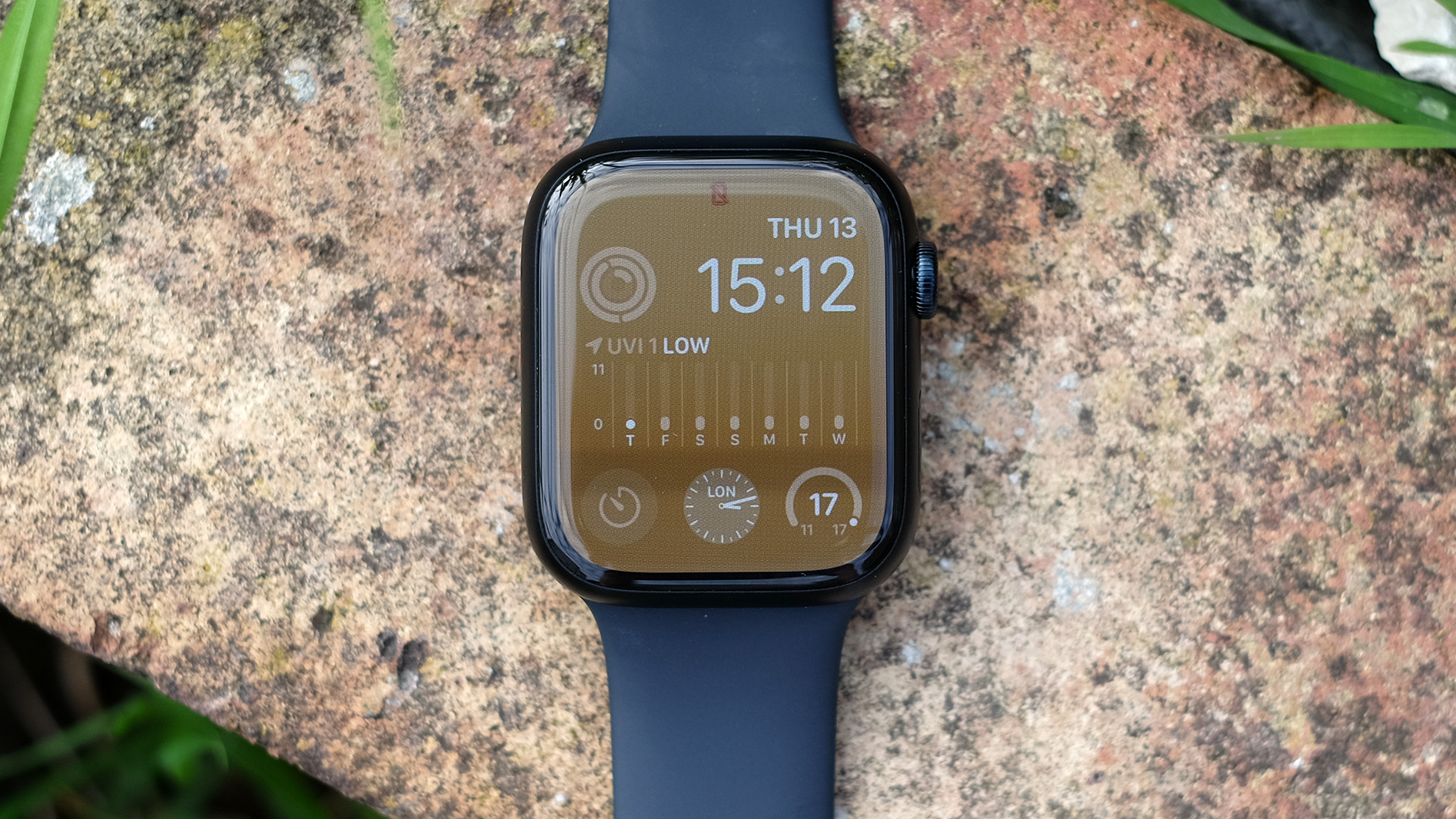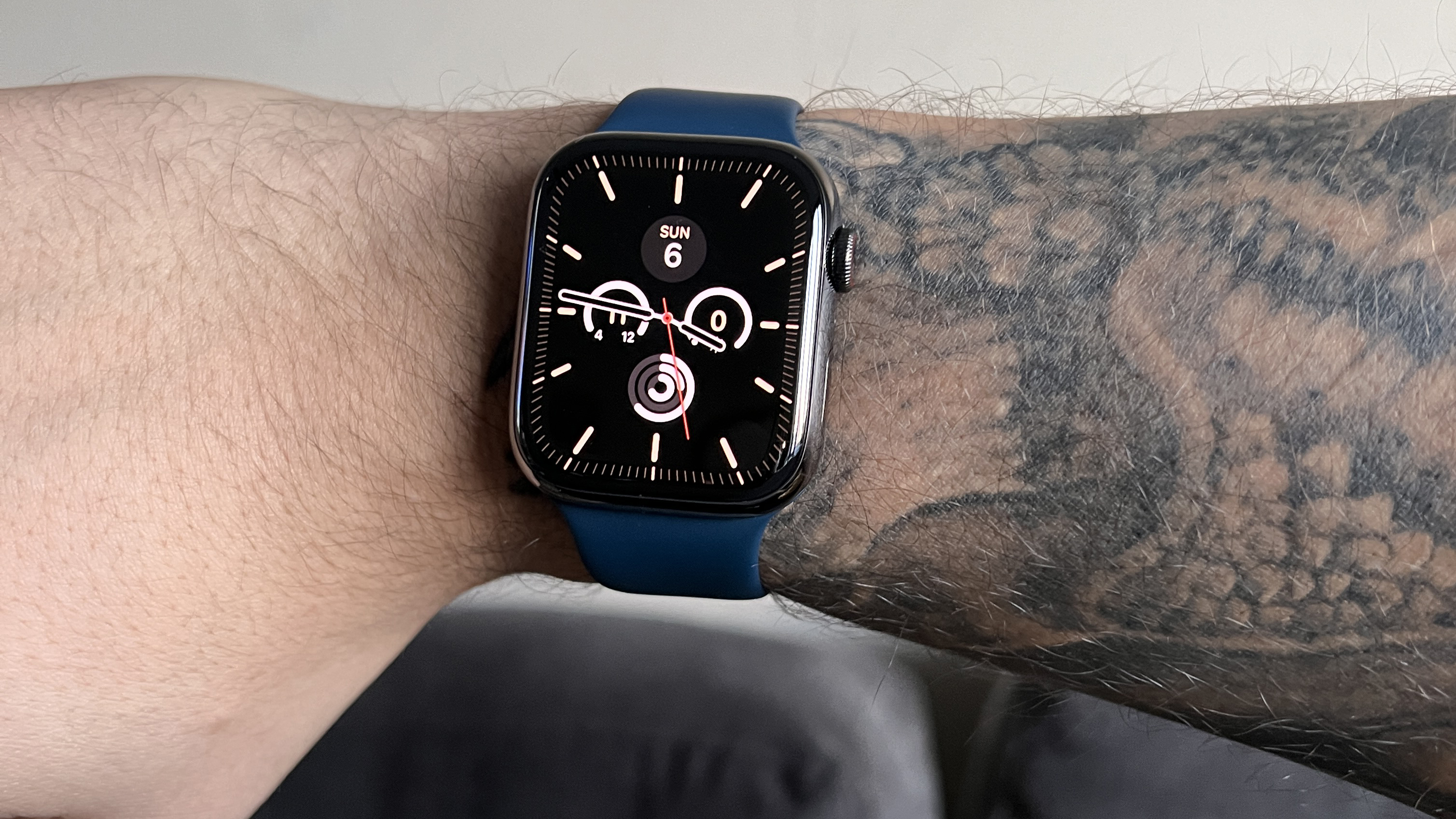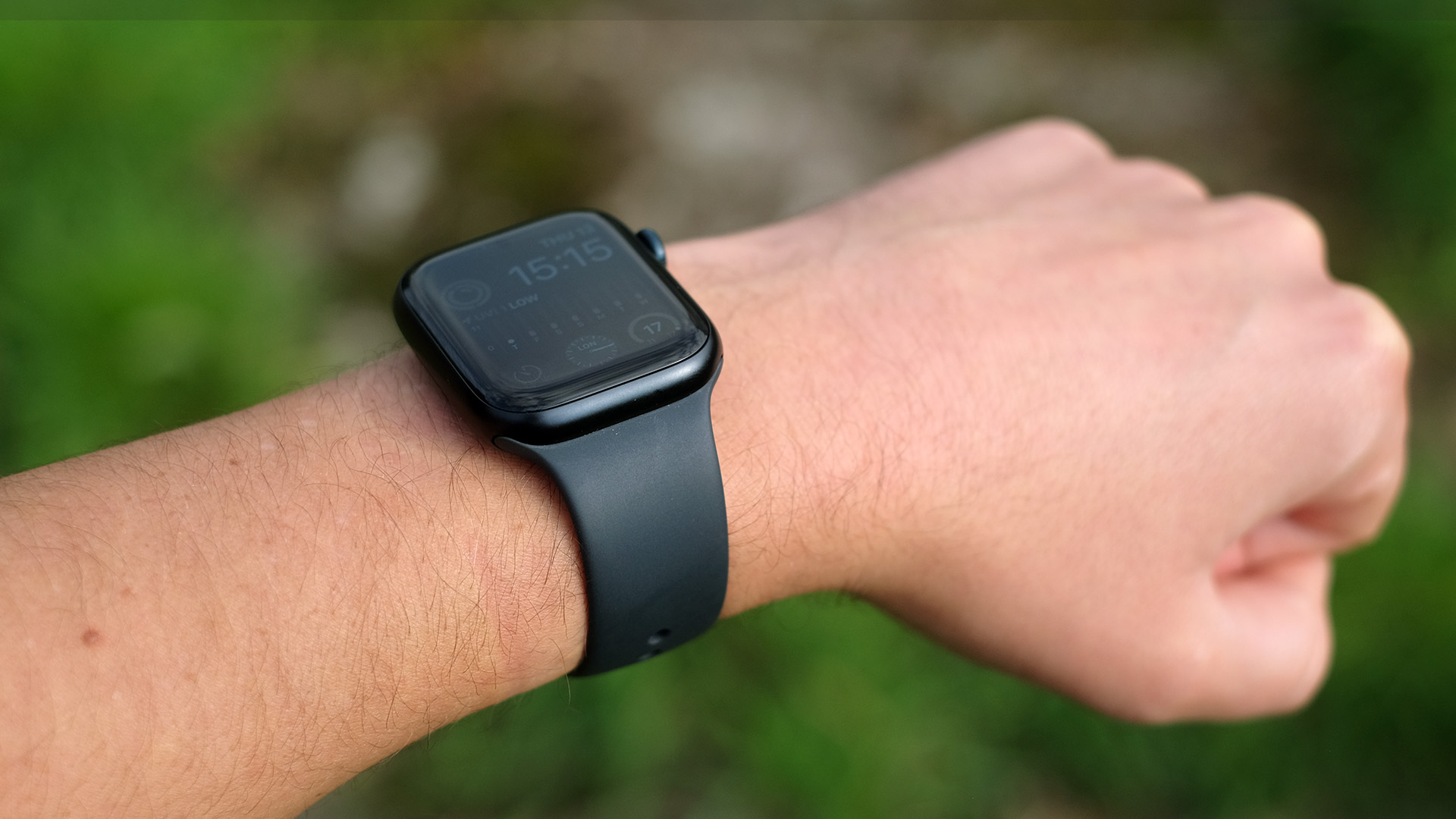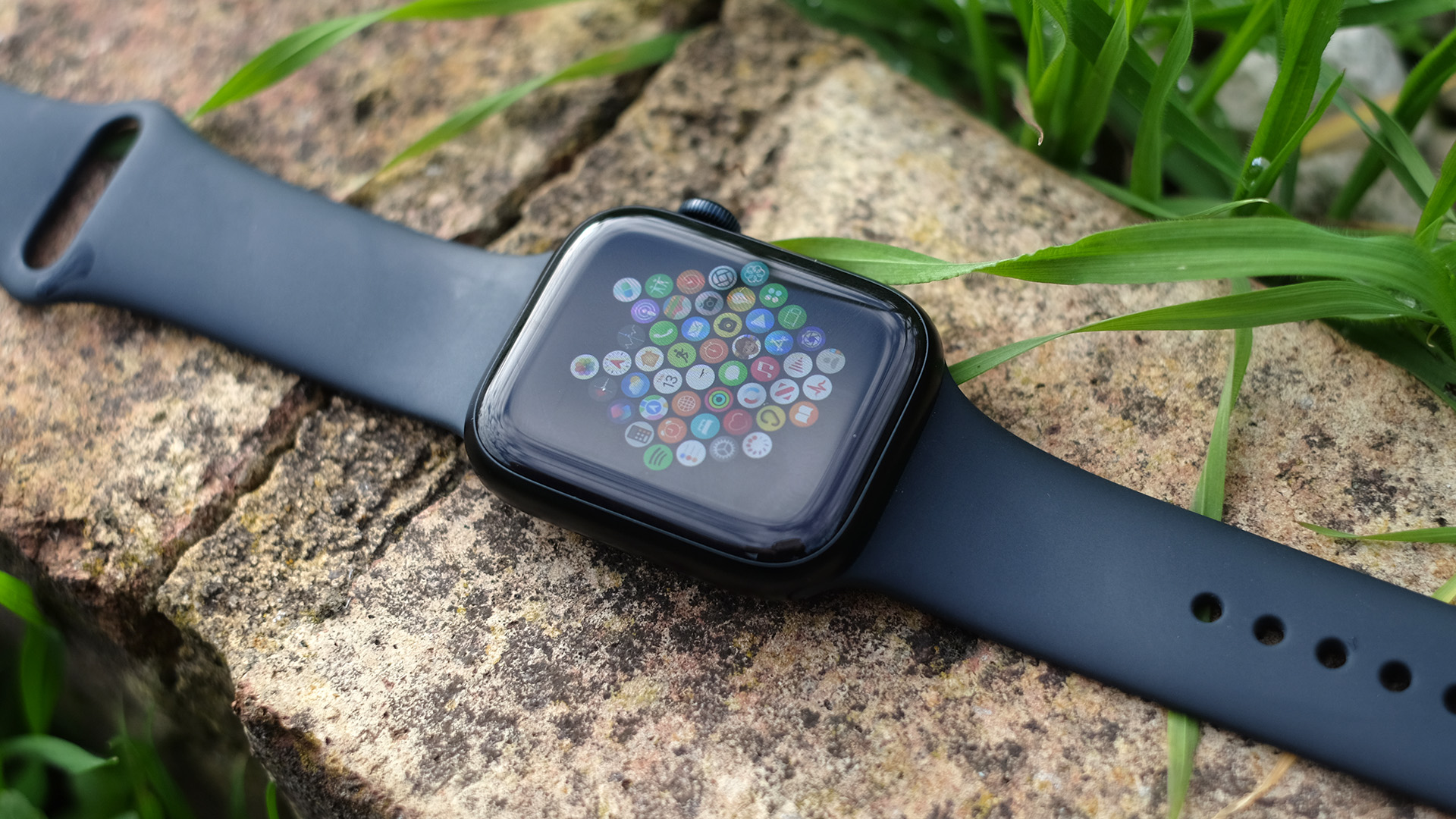The Apple Watch is one of the best fitness trackers available, offering so much more than its competitors. Thanks to deep integration with the iPhone’s iOS operating system, the Apple Watch is the most functional smartwatch around – but that can make picking between the Apple Watch 7 vs Apple Watch 8 tricky.
The good news is that whichever model you opt for, you’re getting plenty of bang for your buck. While the best fitness trackers tend to track your steps, calories and sleep, while offering the occasional features like message notifications and music playback controls, Apple Watch is a cut above. It offers its own library of apps (many of which you’ll recognize from your iPhone), as well as safety features like fall detection.
Many cheaper fitness trackers have started to catch up with a lot of the sensors of the Apple Watch, with cheaper devices like the Huawei Band 7 offering blood oxygen levels – something Apple touted as a flagship feature just a few years ago. The trouble is, the Apple Watch is so dominant that its annual upgrades are fairly meager – making the decision of whether to buy the Apple Watch Series 7 or Apple Watch Series 8 a tough call.
Thankfully, we’ve rounded up the biggest differences to be found.
Which is cheaper?
This is a complex question, because as is customary with Apple Watch models, the Series 7 has essentially been shuffled off of Apple’s store and replaced with the Series 8.
Even third-party retailers appear to have cleared their stock, and at the time of writing, Amazon is offering the 45mm Series 7 for $369 (opens in new tab) if you like the red colorway, while the 41mm is only available in “renewed options”.
In many ways, Apple has essentially made the Series 8 the de facto purchase option because it’s naturally much easier to find. It starts at $399 for the 41mm option (opens in new tab), so your decision may end up being based on which size you’re after.

Which is more accurate?
While there are some subtle features that the Series 8 has over the Series 7, this question is essentially moot.
We’ve tested multiple Apple Watch models from the original Series 0 all the way to the current editions, and while they’ve gotten more accurate over time, they’ve naturally plateaued as the technology has become more reliable.
As a result, the Series 8 is no more or less accurate than the Series 7, and even the Series 6 and Series 5 before it.
Which looks better?
Again, it’s tough to tell the Series 7 and Series 8 apart from a design perspective because they’re using an identical chassis.
Both offer a rounded square design, with a display that “flows” over the edges of the body (a feature which debuted in the Series 7). On one side you’ll find the digital crown and a side button, and everything else is handled by the touchscreen.
In fact, the only way you’ll be able to tell the Apple Watch models apart is through the color options. The Series 7 offers blue and green colorways, but these have been removed from the Series 8. Apple’s latest watch comes in midnight, starlight, silver and product red.

Which model offers more features?
Here’s where the two devices start to diverge a little from one another, although it’s not as clear-cut as you’d think. There are essentially two main new additions with the Apple Watch Series 8.
Firstly, there’s a new temperature sensor that monitors your skin temperature. Many fitness trackers use this to identify an incoming infection, but Apple Watch Series 8 uses it to help with cycle and fertility tracking.
Secondly, a feature you hope never to need is Apple Watch Series 8’s new crash detection functionality. With improved gyroscopes and accelerometers, plus the ability to test the barometric pressure when an airbag is deployed, your Apple Watch can offer to contact the emergency services if you’ve been in an accident.

Everything else, including new features in the latest watchOS 9 update, can be found on both watches. That means the new low-power mode, additional workout metrics, and a new compass are universal.
If you’re looking for brand new features, you’ll need to look at Apple Watch Ultra, the new “big brother” of the Watch line-up. It adds a 49mm case, is made of titanium, and has an additional button with context-specific actions. It’s designed for those folks that climb mountains or run ultra marathons, and therefore may be overkill – but it’s a nice option to have.
Which is better for tracking workouts?
Again, much of the innards of the Apple Watch have remained the same from last year, which means that the Series 7 and Series 8 are evenly matched.
While watchOS 9 has added new workout views that offer glimpses at heart rate zones, running power, hiking elevation and even stride length, the update has rolled out to multiple Apple Watch models.
Both have access to third-party apps, too, so you can run Strava from your wrist, or monitor your rest periods using Fitbod in between sets at the gym.

Which has a better battery life?
While the Apple Watch Ultra gets a big boost to battery life thanks to its larger chassis, the Apple Watch Series 7 and Series 8 are still evenly matched with around a day and a half to two days of use. The more you do on your watch, such as running apps, tracking workouts, or taking ECGs, the quicker you’ll see that burn down, too.
Thankfully, Apple added a Low Power mode in watchOS 9 which can help eke out more time between charges at the cost of Wi-Fi and data connections and limited notifications. It can actually help push your watch on for another day or two, so it’s worth checking out.
Thankfully, if you do need to charge, the Apple Watch Series 7 and Series 8 come with faster charging pucks than prior versions. You can get around 80% of battery in 45 minutes, which is considerably faster than prior versions – but you’ll need to be using the included charger to achieve that speed.
Verdict
While its advancements are slim, we’d recommend picking up the Apple Watch Series 8 regardless. That’s because the Series 7 is harder to find and not significantly discounted enough to make up for the Series 8’s higher resale value in a few years time when we’re into the double digits of Apple Watch Series.
Still, if you already have a Series 7, there’s little to no need to upgrade unless you’re concerned about a fall or crash, or are tracking your ovulation.




